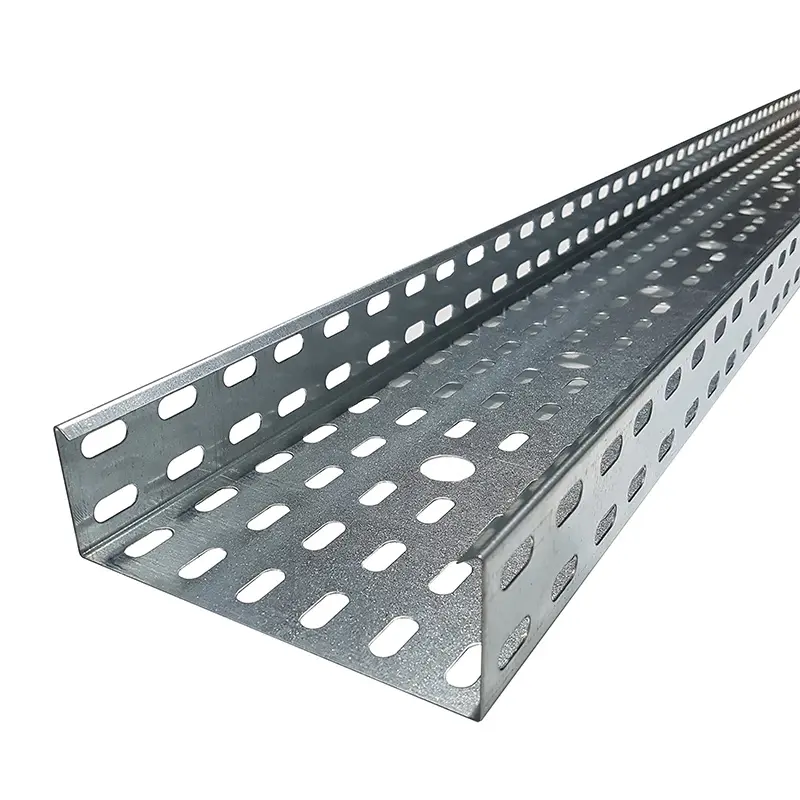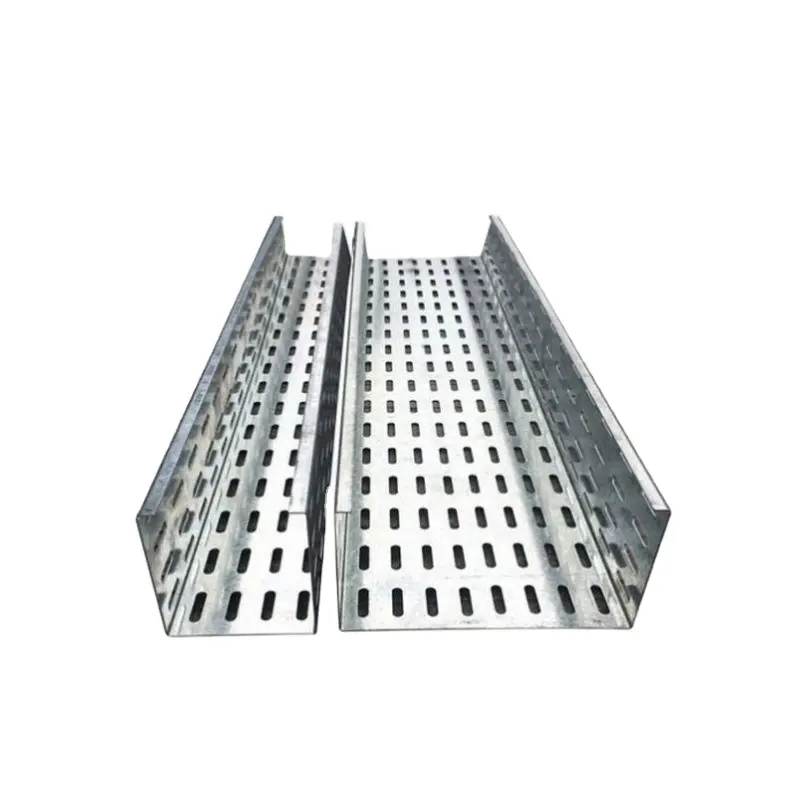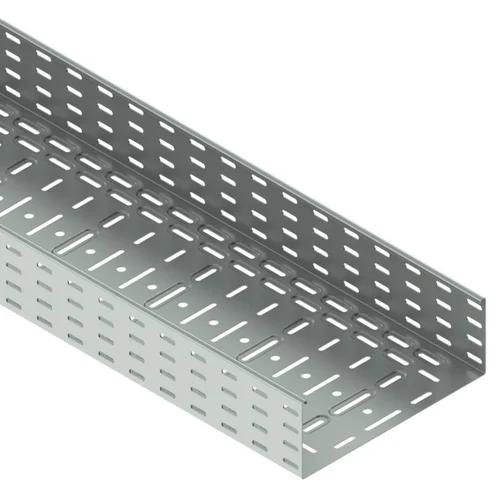In today’s technology-driven environments, efficient cable management is crucial for maintaining a clean, organized, and functional workspace. Wall mounted cable trays offer a versatile and effective solution for managing cables in various settings, from offices and data centers to industrial facilities and commercial spaces. By providing a structured and easily accessible platform for cable routing and organization, wall mounted cable trays contribute to improved safety, aesthetics, and overall workspace efficiency. This comprehensive guide explores the numerous benefits of wall mounted cable trays, their types, installation processes, best practices, and future considerations.
1. Improved Workspace Organization:
Wall mounted cable trays help streamline cable management by providing a dedicated space for organizing and routing cables along walls, ceilings, or overhead structures. This eliminates clutter, reduces trip hazards, and creates a more professional appearance, enhancing the overall organization of your workspace. With cables neatly arranged in trays, it becomes easier to identify and access specific connections, reducing downtime and improving productivity.

2. Enhanced Safety:
Proper cable management using wall mounted cable trays significantly reduces the risk of electrical accidents, fires, and other hazards associated with disorganized cables. By securing cables in place and maintaining proper clearance and spacing, wall mounted trays minimize the likelihood of accidental disconnections, damage, or electrostatic discharge (ESD). Additionally, well-organized cables are less prone to overheating, which can help prevent equipment failures and prolong the lifespan of your electronic devices.
3. Increased Flexibility and Adaptability:
Wall mounted cable trays offer a high degree of flexibility and adaptability, allowing you to modify and expand your cable management system as your workspace requirements change. You can easily add, remove, or reposition cables within the tray without disrupting the entire setup, ensuring your infrastructure remains adaptable to evolving technologies and business needs.
4. Simplified Maintenance and Upgrades:
With cables neatly organized in wall mounted trays, routine maintenance tasks such as cleaning, inspecting, and upgrading cables become much more manageable. You can quickly identify and address issues, saving time and reducing downtime. Moreover, well-organized cables are less prone to damage, leading to increased longevity and reduced replacement costs.
5. Energy Efficiency and Cost Savings:
Proper cable management using wall mounted trays can contribute to energy efficiency by minimizing cable resistance and heat generation. This, in turn, can reduce energy consumption and lower electricity bills. Furthermore, an organized workspace can improve employee morale and productivity, leading to potential cost savings through increased output and reduced absenteeism.
6. Space Optimization:
Wall mounted cable trays maximize vertical space by utilizing walls, ceilings, or overhead structures for cable routing. This frees up valuable floor space, making it easier to move around the workspace and accommodate additional furniture, equipment, or personnel. In confined spaces or areas with high foot traffic, wall mounted trays are particularly beneficial for maintaining clear walkways and work zones.
Types of Wall Mounted Cable Trays:
1. Ladder-Type Cable Trays:
Ladder-type cable trays feature an open design with parallel side rails and rungs, providing excellent ventilation and accessibility. They are ideal for managing large volumes of cables and facilitating easy cable routing and modifications. Ladder-type trays are available in various materials, including steel, aluminum, and fiber-reinforced plastic, each offering unique advantages in terms of strength, weight, and corrosion resistance.
2. Solid Bottom Cable Trays:
Solid bottom cable trays offer a fully enclosed design that prevents dust accumulation and provides additional protection for cables. They are particularly useful in environments with high levels of dust or where cable security is a concern. Solid bottom trays can also help dampen noise generated by moving cables and can be equipped with sound-absorbing materials for added acoustic benefits.
3. Wire Mesh Cable Trays:
Wire mesh cable trays combine the benefits of ladder-type and solid bottom trays, offering partial enclosure and improved ventilation. They are suitable for various applications and provide a balance between accessibility and cable protection. Wire mesh trays can also be used in conjunction with other tray types to create customized cable management solutions tailored to specific workspace requirements.

Installation and Configuration of Wall Mounted Cable Trays:
1. Assess Your Workspace:
Before installing wall mounted cable trays, thoroughly assess your workspace to determine the optimal tray size, type, and configuration based on your cable volume, device locations, ergonomic considerations, and any unique workspace constraints.
2. Measure and Plan:
Accurately measure the dimensions of your walls, ceilings, or overhead structures and determine the appropriate mounting locations for the cable trays. Develop a detailed plan for cable routing and tray placement that minimizes cable lengths, maintains proper clearance, and facilitates easy access to connections. Consider factors such as cable bend radius, cable density, and the need for cable segregation based on voltage, data, or signal types.
3. Install Support Brackets:
Securely attach support brackets to the walls, ceilings, or overhead structures, following the manufacturer’s guidelines and adhering to local building codes and regulations. Ensure the brackets are level and evenly spaced to provide adequate support for the cable tray, and consider the use of vibration isolation mounts to minimize noise transmission and protect cables from mechanical stress.
4. Install the Cable Tray:
Attach the wall mounted cable tray to the support brackets, making sure it is securely fastened and level. If necessary, use cable ties, Velcro straps, or hook-and-loop fasteners to further secure the cables within the tray and maintain a neat appearance. Implement appropriate cable management accessories, such as cable guides, ducts, or conduits, to facilitate smooth cable routing and prevent kinking or damage.
5. Route and Organize Cables:
Carefully route and organize cables within the tray, using color-coded cable ties, labeling systems, or other management tools to keep them separated, untangled, and easily identifiable. Follow industry standards and guidelines, such as those outlined in the National Electrical Code (NEC) and Telecommunications Industry Association (TIA), for cable separation, support, and routing.
Best Practices for Wall Mounted Cable Tray Management:
1. Regular Inspection and Maintenance:
Conduct periodic inspections of your wall mounted cable tray to identify any signs of wear, damage, or loose connections. Clean the tray and cables as needed, using appropriate cleaning agents and techniques that do not harm the cable insulation or connectors. Promptly address any issues to ensure continued safe and efficient operation.
2. Proper Cable Spacing and Clearance:
Maintain appropriate clearance and spacing between cables within the tray to prevent overheating, reduce the risk of electrical accidents, and facilitate proper airflow for cooling. Follow industry standards and guidelines for cable separation and support, considering factors such as cable type, current rating, and environmental conditions.
3. Use High-Quality Cable Management Accessories:
Invest in high-quality cable ties, Velcro straps, cable labels, raceways, grommets, and other accessories to enhance the organization and safety of your wall mounted cable tray system. These items can help streamline cable management, improve aesthetics, and make future modifications more straightforward.
4. Consider Cable Length and Accessibility:
When routing cables within the tray, carefully consider the length required for each connection and ensure there is enough slack for easy access and movement. Avoid over-tightening cable ties or creating excessively sharp bends, which can damage cables over time and compromise their performance.
5. Stay Adaptable and Future-Proof:
As technology advances and your workspace requirements evolve, periodically reassess your wall mounted cable tray configuration to ensure it continues to meet your needs effectively. Be prepared to modify or expand the system as needed to accommodate new devices, equipment upgrades, or changes in office layout.
6. Employee Training and Awareness:
Educate employees on the importance of proper cable management and the role of wall mounted cable trays in maintaining a safe, organized, and productive workspace. Encourage adherence to cable management best practices and provide training on the correct use of cable management accessories and tools.
7. Collaboration with IT and Facilities Teams:
Work closely with your organization’s IT and facilities teams to ensure that wall mounted cable trays are integrated seamlessly into the overall infrastructure and comply with company policies, industry standards, and regulatory requirements. Collaborate on cable management strategies that optimize resource allocation, minimize downtime, and promote workplace safety.

Conclusion:
Wall mounted cable trays are a versatile and efficient solution for managing cables in modern workspaces. By improving organization, enhancing safety, and promoting flexibility, they contribute to a more productive and enjoyable work environment. By following best practices for installation, configuration, and maintenance, you can maximize the benefits of wall mounted cable trays and create a tidy, functional, and adaptable workspace that supports your evolving technology needs. As technology continues to advance and workspace requirements change, staying informed about the latest cable management trends and innovations will enable you to maintain a cutting-edge, efficient, and safe workspace for years to come.

